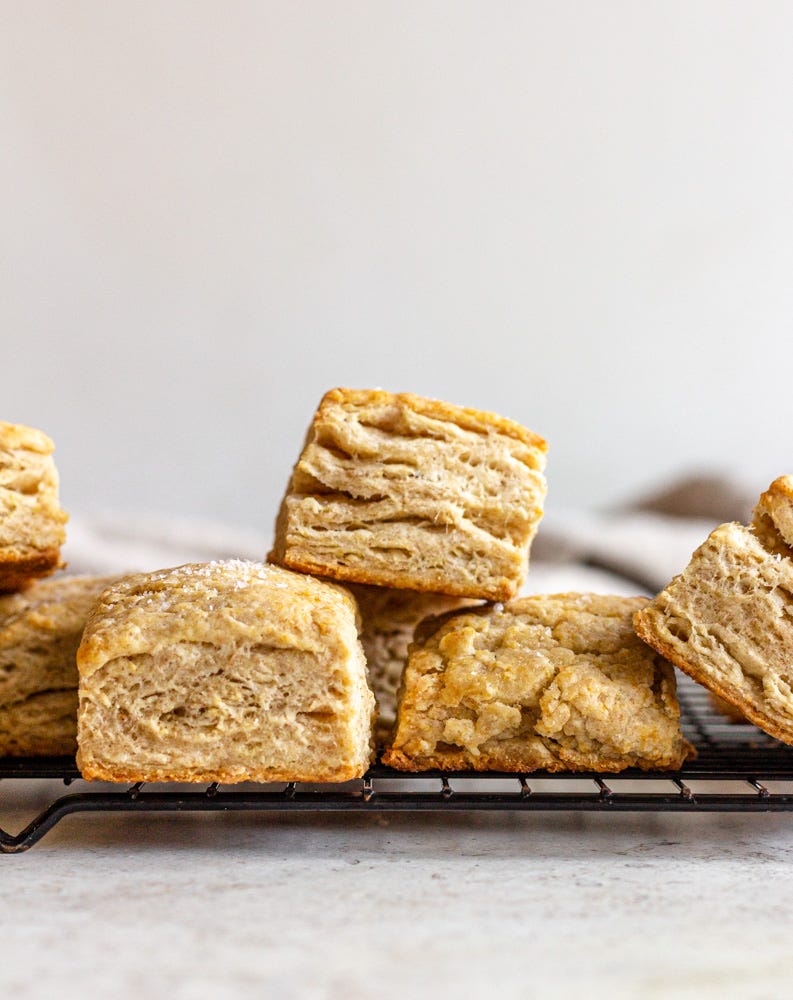If you’ve ever taken a stroll down the baking aisle of your local grocery store, you’ve probably noticed there are close to a billion different types of flour (I might be exaggerating a smidge, but there are definitely a lot). You have also probably cooked from a recipe that has a measurement listed as “one cup of flour” and you’ve thought to yourself “What kind of flour am I supposed to use?” Or “Aren’t all flours the same?” Well, let’s answer those questions!
I have been wanting to write about this for a long time because understanding flour is empowering. Once you understand what exactly flour does in a recipe, what all the different types are, and you know how to read a bag of flour, the culinary world is your oyster, so to speak. You have the power not only to follow a recipe and understand it, but you have the freedom and know-how to change a recipe to suit your needs. You can begin to stretch your baking muscles and even create your own recipes. So take a peak at the flours in your pantry, pull up a chair, and let’s start from the beginning.
What is flour?
For the purpose of our little lesson here, we will only be talking about wheat flour, meaning flour that comes from the wheat plant (not necessarily whole wheat flour). We will leave those specialty flours like buckwheat, spelt, and kamut for a later discussion. The part of the wheat plant that gets milled into flour is called the wheat kernel, or wheat grain. A wheat kernel looks like a cute little oval seed and it is made up of three different parts: the bran, the germ, and the endosperm.
-The bran is a protective layer that covers the outside of the wheat kernel and is usually darker in color than the endosperm. It is high in dietary fiber, which is why you will see “wheat bran” on the shelves of the grocery store that can be added to foods for a little fiber boost. The bran does not form gluten, adds a dark rustic appearance, and imparts a slightly nutty flavor.
-The germ is the embryo of the wheat kernel and in the right conditions, can sprout into a new plant. It is full of nutrients, but also does not form gluten.
-The endosperm is the largest part of the wheat kernel. It makes up around 80% of the kernel and is the whitest part of the kernel, mostly because of its high starch content. The starch in the endosperm is embedded in chunks of protein. There are two different proteins located in the endosperm, glutenin and gliadin, and when mixed with water, these proteins form the all-important gluten.
A note on whole wheat flour:
All flour that comes from the wheat kernel is considered wheat flour. The most common white-colored flour found on the shelves of grocery stores and in white-flour products is made from milling just the endosperm of the wheat kernel. Remember that the endosperm is mostly white in color due to its starch content, so it’s naturally a whiter flour. Whole Wheat flour is made using the entire wheat kernel (bran, germ, and endosperm), which provides extra nutrients, but doesn’t always work the same way in baking due to its lowered ability to form gluten (because of the addition of non-gluten forming bran and germ). The inclusion of the bran and germ also gives whole wheat flour its signature rusty color.
Whew. That feels like a lot of science, but let’s look practically at what exactly that all means when it comes to the role flour plays in baking.
What role does flour play in baking?
Keep reading with a 7-day free trial
Subscribe to Pastry School 101 to keep reading this post and get 7 days of free access to the full post archives.





